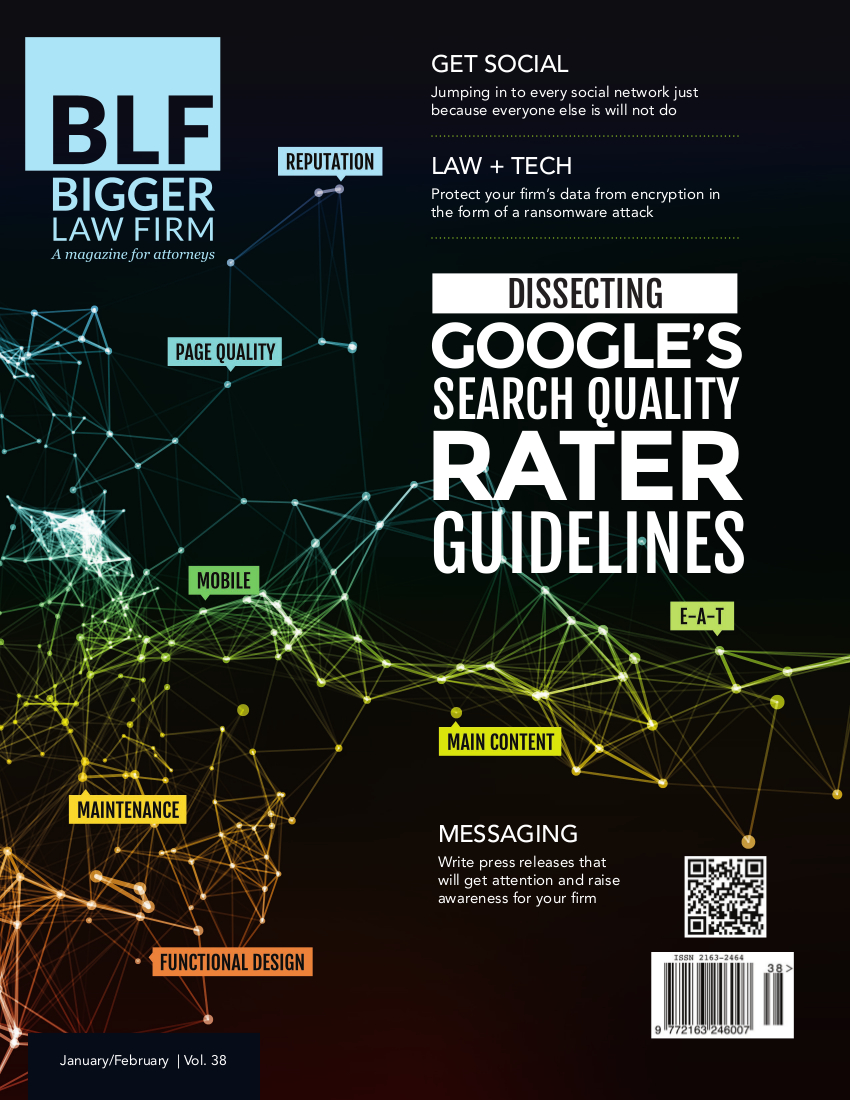
Dissecting Google's Search Quality Rater Guidelines
San Francisco, CA (Law Firm Newswire) February 26, 2016 – Attorneys who want to build a strong web presence will want to check out the latest issue of The Bigger Law Firm magazine.
In the feature article, “Dissecting Google's Search Quality Rater Guidelines,” Ryan Conley gives an in-depth look into what Google wants in a website. In order to test the ability of its computer algorithms to push the best pages to the top of search results, Google needs humans to rate large numbers of websites. This is where the company's evaluation program comes in, and the Guidelines teach evaluators how to rate website quality.
As Conley explains, law firms first need to understand that they are held to high standards. That is because they qualify as “Your Money or Your Life” sites, Google's tongue-in-cheek name for websites that concern sensitive topics like law, finance and health. How then can law firms live up to these standards and achieve high placement in search results?
Three important characteristics are summed up in the acronym E-A-T: expertise, authoritativeness and trustworthiness. Evaluators are instructed to look for these characteristics, but are allowed to subjectively interpret what might indicate them. Conley provides examples of how to strike the right tone with readers.
Reputation is another important factor in determining page quality, and this factor is more objective. Evaluators are to seek out third-party reviews of companies whose pages they rate. While some attorneys may be reluctant to ask clients for reviews, their ability to make websites stand out is clear.
Google's Guidelines emphasize the growing importance of smartphone and tablet users, who differ from desktop users in their search engine needs and their device capabilities. Conley provides an overview of design principles and specific methods for testing website performance on mobile devices.
To sum up, Conley explains that the publication of the Guidelines provides no surprises in the world of web development. Rather, they simply reinforce the notion that there are no shortcuts to good website development, and law firms need to approach the task with as much care as an important client's case.

Download the latest Bigger Law Firm Magazine Issue: Dissecting Google's Search Quality Rater Guidelines
To learn more about how to build a Bigger Law Firm, visit https://www.biggerlawfirm.com
- Google Limits Search Results Per Domain for More Diversity – How Does This Affect Law Firms?
- Big Results for Big Law Firms
- The Role of Cybersecurity in the Legal Field
- SEO Hierarchy of Needs: A Guide for Beginner Law Firms
- Should Law Firms Use Chatbots Rather Than Mobile Forms?
- Outside the Box: Non-Standard Lawyer Website Inspiration
- Does Your Firm Need a Legal Credit Card Processor?
- How Facebook’s New Political Ad Guidelines Are Affecting Lawyer Advertising
- Why Law Firms Need to Use VPNs
- Why Newsletters Fail and How Your Law Firm’s Newsletter Can Succeed

